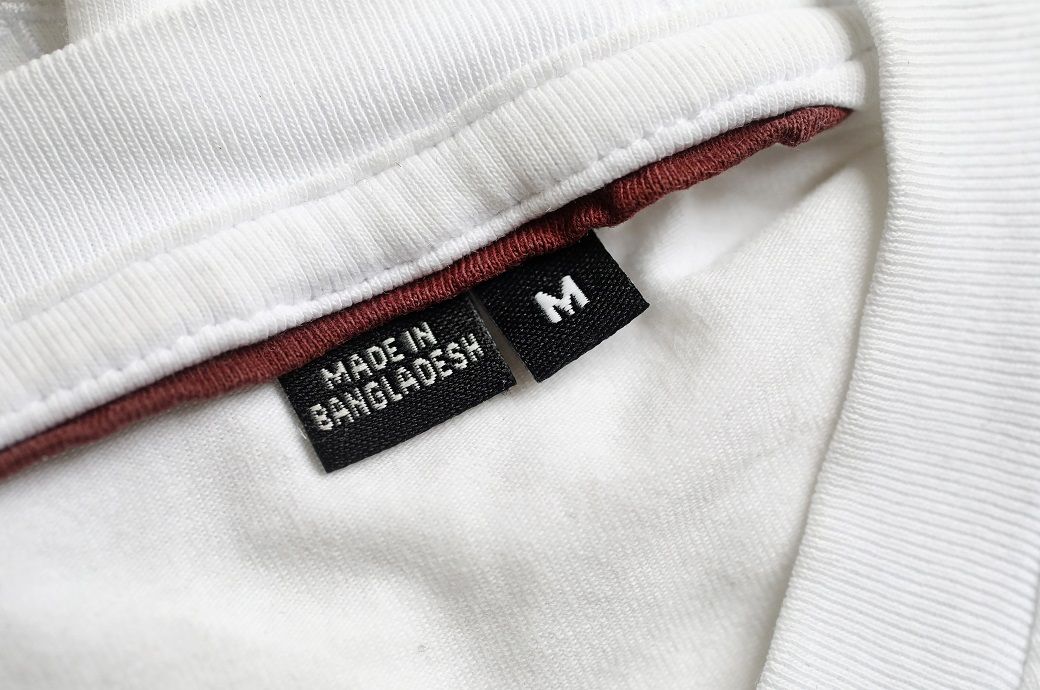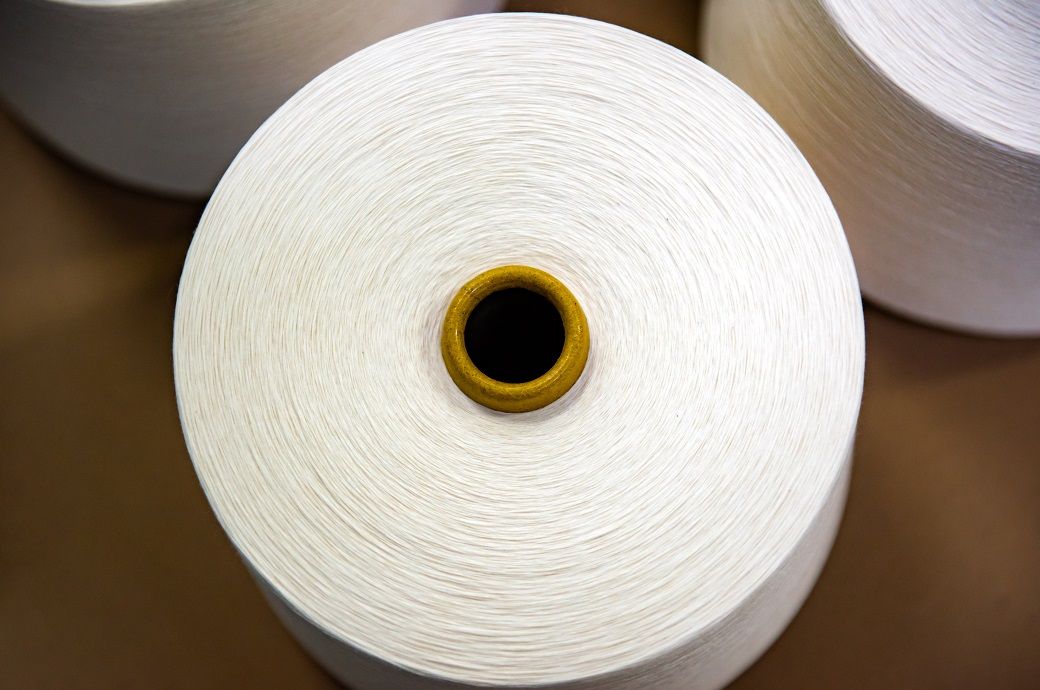Fashion
Banking woes threaten Bangladesh’s RMG export momentum

On the other hand, the very backbone of the country’s apparel export ecosystem—its banking system—has been exhibiting severe structural failures, paralysing operations, and threatening future growth prospects.
Bangladesh apparel industry is reportedly facing a liquidity crunch due to banking failures at a time when shifting orders are expected to benefit the country.
The sector’s heavy reliance on back-to-back LCs has turned risky, as local banks struggled to honour or issue new LCs.
Exporters warned delayed payments and financing risks might hit Bangladesh’s image while also eroding its competitive gains.
With Western retailers increasingly seeking alternatives to Chinese suppliers amid geopolitical and cost considerations, Bangladesh has emerged as a key beneficiary. Reports of order diversions from China and even India were already fuelling optimism across the textile-exporting community.
However, just as factories began preparing to absorb the expected surge in orders, the sector was blindsided by a systemic banking failure—one that has reportedly affected production in around 400 garment manufacturing units recently.
The crisis is rooted in the sector’s heavy reliance on Letters of Credit (LCs) for procurement and production continuity.
Typically, in export-based business models, foreign buyers open LCs through internationally recognised banks, ensuring payment to the supplier upon shipment. Bangladeshi exporters, however, operate within a more constrained framework. They commonly utilise back-to-back LCs provided by local banks to finance the procurement of raw materials. These back-to-back LCs are settled once export proceeds are realised.
The model worked efficiently—until liquidity dried up.
Reports indicate banking problems escalated sharply during the COVID-19 pandemic period. Since then, a cascading series of alleged financial missteps, rising non-performing loans (NPLs), and widespread governance issues have only deepened the cracks, as per reports.
Exporters have complained that even when export dollars are repatriated into the country, banks have been delaying or withholding the disbursement of funds. This has not only hindered the settlement of back-to-back LCs but has also jeopardised the ability of factories to pay worker wages—a particularly sensitive issue in Bangladesh, where the RMG sector directly employs over four million people and indirectly supports the livelihoods of many more.
According to data from the central bank—Bangladesh Bank—non-performing loans in the country’s banking sector reportedly jumped by Taka 74,570 crore in the January–March 2025 quarter, pushing the cumulative figure beyond Taka 4.20 lakh crore.
Several financial institutions are reportedly teetering under the weight of these bad loans, many of which are the result of alleged politically backed fraudulent lending practices and regulatory inertia.
Among the most vulnerable are five Islamic banks, facing critical liquidity shortages.
Recognising the systemic risk, the Bangladesh Bank has now proposed a merger of these five crisis-hit Islamic banks into a single entity—‘United Islami Bank.’ With the approval of the interim government, the central bank has reportedly pledged a capital infusion of Taka 20,200 crore to stabilise the merged institution.
This restructuring, though vital, may take time to translate into functional liquidity relief for the export sector, especially given the urgent cash flow needs of factories already struggling to stay operational.
In the meantime, industry representatives have been lobbying hard for immediate intervention. A BGMEA delegation, led by its president, met with the governor of the Bangladesh Bank to raise urgent concerns about the banking bottleneck. During the meeting, the BGMEA highlighted the inability of multiple banks to release repatriated export proceeds or issue new LCs—both of which are essential for maintaining production cycles and meeting international shipment deadlines.
According to reports, the BGMEA president made it clear that these delays are not just hurting domestic business continuity but are also inflicting reputational damage on Bangladesh’s credibility in the global arena.
In an industry where timeliness and trust are paramount, any perception of systemic risk—particularly around payment and financing—can result in order migration to more stable sourcing destinations.
That a sector contributing about 85 per cent of the country’s export revenues and powering nearly four million direct jobs finds itself at the mercy of banking dysfunction signals a deep policy failure, feels many.
The government, aware of the criticality of the situation, started taking steps to provide liquidity support, if reports are to be believed.
On September 4, the BGMEA issued a statement confirming that Bangladesh Bank had released Taka 886 crore in export proceeds via two distressed banks—Exim Bank and Social Islami Bank Ltd (SIBL). The disbursement has reportedly enabled nearly 250 garment factories to pay workers’ wages and allowances for August and September.
While such temporary injections could provide some breathing space, such measures are far from being a sustainable solution.
Compounding the challenge is the psychological effect the crisis is having on foreign buyers and financial markets. Order volumes and investment flows, after all, are heavily influenced by perceptions of political and financial stability.
So, even if the US imposed a somewhat favourable 20 per cent tariff on Bangladeshi goods, effective from August 7, the banking turmoil could end up eroding those competitive gains. If international buyers begin to question the reliability quotient, especially due to financial transaction risks, the consequences could be long-lasting.
The scenario unfolding at a time when many global brands are actively diversifying their sourcing bases, Bangladesh has an open runway to seize a larger share of the global apparel export pie, but for the liquidity crisis, which many fear, could become a roadblock to capitalising on the opportunities on offer.
Fibre2Fashion News Desk (DR)
Fashion
South Indian cotton yarn supported by higher fibre, Tiruppur prices up

The Tiruppur market recorded a price rise of ****;*–* per kg as mills attempted to pass on higher cotton costs, although local demand remained weak. A trader from Tiruppur told Fibre*Fashion, “Tamil Nadu and other states’ spinning mills are raising prices to cover higher cotton costs. They want to increase prices by *–* per cent to fully offset rising production costs, but domestic consumer industry support is lacking. Summer demand is unlikely to pick up before January. The weakening rupee against the US dollar has also provided relief, as mills can compete better in export markets.”
In Tiruppur, knitting cotton yarn prices were noted as ** count combed cotton yarn at ****;***–*** (~$*.**–*.**) per kg (excluding GST), ** count combed cotton yarn at ****;***–*** (~$*.**–*.**) per kg, ** count combed cotton yarn at ****;***–*** (~$*.**–*.**) per kg, ** count carded cotton yarn at ****;***–*** (~$*.**–*.**) per kg, ** count carded cotton yarn at ****;***–*** (~$*.**–*.**) per kg and ** count carded cotton yarn at ****;***–*** (~$*.**–*.**) per kg.
Fashion
Pat McGrath Labs explores asset sale

Published
December 21, 2025
Pat McGrath Labs is undergoing a restructuring and recapitalisation process, according to multiple reports.
As part of the process, the company is reviewing its assets, with some — including its trademark and logo — potentially set to be sold through a formal sale process. Bids are due by January 26, with an auction scheduled for the following day. The process is being managed by U.S.-based financial services firm Hilco Global.
Founded by British makeup artist Dame Pat McGrath, the brand celebrated its 10th anniversary in October. Pat McGrath Labs rose rapidly following its launch and reached unicorn status in 2018 after securing an investment from Eurazeo that valued the company at more than $1 billion.
In recent years, however, the brand has faced operational challenges, alongside executive turnover and layoffs, and its valuation is now widely reported to be a fraction of its former peak.
The development comes just one year after McGrath was named creative director of Louis Vuitton’s debut makeup line, La Beauté, which launched this summer.
Copyright © 2025 FashionNetwork.com All rights reserved.
Fashion
S/S 2027 trends emerge as Intertextile Apparel unveils Paradox

In today’s context, a paradox is about casting an optimistic gaze upon the world, rekindling the consumer’s desire, and nurturing a sense of well-being – where daring to step into the light is the theme of the season, set to generate a fresh new dynamic. PARADOX is the thread connecting the S/S 2027 fashion trends – AFFECTION, BREATHE, BEWITCHING, and HONOURATION – conceived by four leading forecasters from the world’s fashion capitals. From 11 – 13 March 2026 at Intertextile Shanghai Apparel Fabrics – Spring Edition, visitors will be able to explore these trends in depth at the Trend Forum in Hall 5.1 of the National Exhibition and Convention Center (Shanghai).
Intertextile Shanghai Apparel Fabrics – Spring Edition (March 11–13, 2026) will spotlight S/S 2027 trends under the theme Paradox at the Trend Forum in Hall 5.1.
Conceived by global forecasters, four themes—Affection, Breathe, Bewitching and Honouration—explore optimism, authenticity, craftsmanship and well-being through over 700 fabric and accessory samples.
At the upcoming Spring Edition, Sachiko Inoue (Tokyo) is tasked with bringing the concept to life at the Intertextile Directions Trend Forum, after conceiving the trends together with Directions Trend Committee members NellyRodi Agency (Paris), DONEGER | TOBE (New York), and Elementi Moda (Milan). The Trend Forum will showcase over 700 fabrics and accessories samples, with the Trend Guide serving as a handbook for buyers to source on-trend fabrics, patterns, prints, and colours.
Accept imperfection: fostering self-confidence through authenticity and simplicity
Less about status and more about contemplation, fashion fosters self-confidence through authenticity, simplicity, and even embracing imperfections. Across four central themes, the PARADOX movement champions individuality over spectacle, valuing durability and a serene, discreet elegance.
AFFECTION
Citywear transforms into easywear, designed for comfort and to encourage stepping outside. The theme blends masculine and feminine elements while mixing traditional craftsmanship with sporty codes: hybrid garments bring functionality, elegance, and effortless style.
Colours include a palette of subtle neutrals, centred on whites and off-whites, painted with soft greys, and tinted with greenery and new-dawn yellow. Including prints and patterns alluding to everyday poetry, fabrics combine tech and precious wool with delicate checks and subtle stripes.
BREATHE
Nautical codes combine urban elegance with smart functionality, adapted to shifting weather conditions. The iconic stripes of the beaches’ buoys and deckchairs infuse a reassuring, joyful, and sunlit dimension into a casual wardrobe, while aquatic inspiration appears in soft, refined layering.
A refreshing colour range is enriched with invigorating aqua and oxygenated blues; fabrics utilise innovative tech with a soft touch; while prints and patterns include elements like subtle burnout jacquard, satin finishes, and wave-like dévoré denim, all combining to reflect a casual, audacious and elegant style.
BEWITCHING
Whether altruistic or enchanting, with this theme women exude everyday sensuality, effortless sophistication, and a celebration of ancestral craftsmanship. Fluid drapes and organic prints draw inspiration from nocturnal forests and dark rituals, while a tarot and lucky charm spirit shapes the radiance of an urban adventurer brimming with emotion.
Vivid, unusual colours burst against dark, mysterious backgrounds, representing a palette of symbolic darks and bright hues. Patterns are inspired by artisanal heritage and natural elements, ranging from elegant to sensual and daring. Fabrics, meanwhile, evoke nature’s nocturnal mystery through abstract chiffons, organza and silks; tone-on-tone washed texture tie-dye; and striped monochrome and shiny satin.
HONOURATION
Demonstrating the ancestral know-how and excellence of craftsmanship, this theme reflects artisanal traditions from around the world, where modest natural materials are elevated to reveal simple refinement, discreet value, and elegant pieces without ostentation.
The colour palette plays on the contrasts between warm neutral tones inspired by raw, refined or precious materials, combined with intense, highly pigmented brights. Fabrics and patterns include innovative ikats, geometric abstract, basketweaves, blurred stripes, and discreet neoclassical flora.
The fair is co-organised by Messe Frankfurt (HK) Ltd; the Sub-Council of Textile Industry, CCPIT; and the China Textile Information Centre. It will take place alongside Yarn Expo Spring, Intertextile Shanghai Home Textiles – Spring Edition, CHIC and PH Value at the National Exhibition and Convention Center (Shanghai).
Intertextile Shanghai Apparel Fabrics – Spring Edition will be held from 11 – 13 March 2026.
Other upcoming shows:
Vietnam International Trade Fair for Apparel, Textiles and Textile Technologies
26 – 28 February 2026, Ho Chi Minh City
Intertextile Shenzhen Apparel Fabrics / Yarn Expo Shenzhen
9 – 11 June 2026, Shenzhen (Futian)
Intertextile Shanghai Apparel Fabrics – Autumn Edition / Yarn Expo Autumn
25 – 27 August 2026, Shanghai
Note: The headline, insights, and image of this press release may have been refined by the Fibre2Fashion staff; the rest of the content remains unchanged.
Fibre2Fashion News Desk (HU)
-

 Business1 week ago
Business1 week agoHitting The ‘High Notes’ In Ties: Nepal Set To Lift Ban On Indian Bills Above ₹100
-

 Business6 days ago
Business6 days agoStudying Abroad Is Costly, But Not Impossible: Experts On Smarter Financial Planning
-

 Business6 days ago
Business6 days agoKSE-100 index gains 876 points amid cut in policy rate | The Express Tribune
-

 Sports6 days ago
Sports6 days agoJets defensive lineman rips NFL officials after ejection vs Jaguars
-

 Tech7 days ago
Tech7 days agoFor the First Time, AI Analyzes Language as Well as a Human Expert
-

 Business1 week ago
Business1 week agoIPO Explained: Meaning, Process, Benefits, Risks
-

 Tech3 days ago
Tech3 days agoT-Mobile Business Internet and Phone Deals
-

 Business3 days ago
Business3 days agoBP names new boss as current CEO leaves after less than two years


















